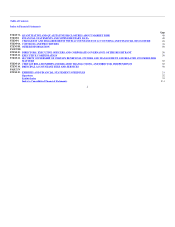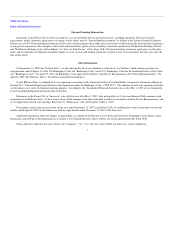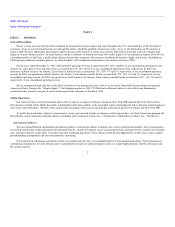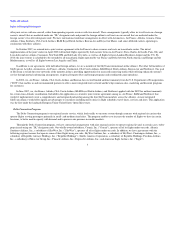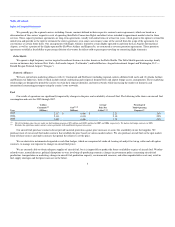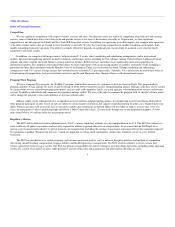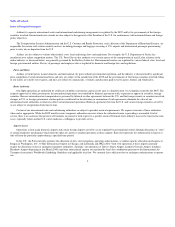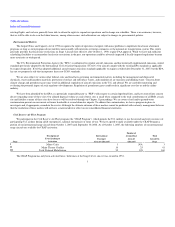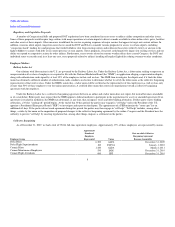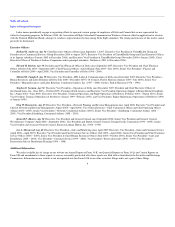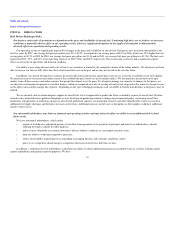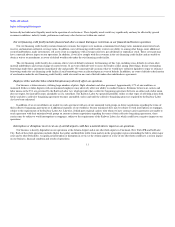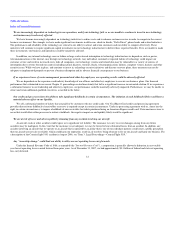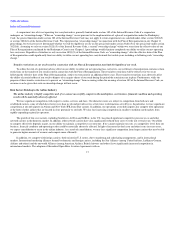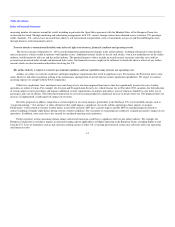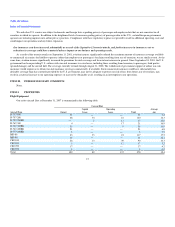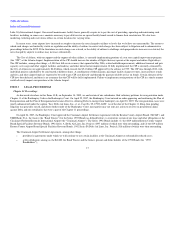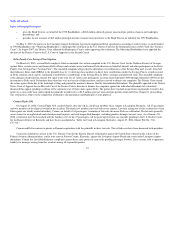Delta Airlines 2007 Annual Report Download - page 15
Download and view the complete annual report
Please find page 15 of the 2007 Delta Airlines annual report below. You can navigate through the pages in the report by either clicking on the pages listed below, or by using the keyword search tool below to find specific information within the annual report.
Table of Contents
Index to Financial Statements
ITEM 1A. RISK FACTORS
Risk Factors Relating to Delta
Our business and results of operations are dependent on the price and availability of aircraft fuel. Continuing high fuel costs or further cost increases
could have a materially adverse effect on our operating results. Likewise, significant disruptions in the supply of aircraft fuel would materially
adversely affect our operations and operating results.
Our operating results are significantly impacted by changes in the price and availability of aircraft fuel. Fuel prices have increased substantially in the
last five years. In 2007, our average fuel price per gallon rose 5% to $2.21, as compared to an average price of $2.10 in 2006, which was 15% higher than our
average price of $1.79 in 2005. In 2004, our average fuel price per gallon was $1.16 and in 2003, our average fuel price per gallon was 81.78¢. The fuel costs
represented 26%, 25%, and 24% of our operating expenses in 2007, 2006, and 2005, respectively. These increasing costs have had a significant negative
effect on our results of operations and financial condition.
Our ability to pass along the increased costs of fuel to our customers is limited by the competitive nature of the airline industry. We often have not been
able to increase our fares to fully offset the effect of increased fuel costs in the past and we may not be able to do so in the future.
In addition, our aircraft fuel purchase contracts do not provide material protection against price increases or assure the availability of our fuel supplies.
We purchase most of our aircraft fuel under contracts that establish the price based on various market indices. We also purchase aircraft fuel on the spot
market, from offshore sources and under contracts that permit the refiners to set the price. To attempt to manage our exposure to changes in fuel prices, we
use derivative instruments designated as cash flow hedges, which are comprised of crude oil, heating oil and jet fuel swap and collar contracts, though we may
not be able to successfully manage this exposure. Depending on the type of hedging instrument used, our ability to benefit from declines in fuel prices may be
limited.
We are currently able to obtain adequate supplies of aircraft fuel, but it is impossible to predict the future availability or price of aircraft fuel. Weather-
related events, natural disasters, political disruptions or wars involving oil-producing countries, changes in governmental policy concerning aircraft fuel
production, transportation or marketing, changes in aircraft fuel production capacity, environmental concerns and other unpredictable events may result in
additional fuel supply shortages and fuel price increases in the future. Additional increases in fuel costs or disruptions in fuel supplies could have additional
negative effects on us.
Our substantial indebtedness may limit our financial and operating activities and may adversely affect our ability to incur additional debt to fund
future needs.
We have substantial indebtedness, which could:
• require us to dedicate a substantial portion of cash flow from operations to the payment of principal, and interest on, indebtedness, thereby
reducing the funds available for other purposes;
• make us more vulnerable to economic downturns, adverse industry conditions or catastrophic external events;
• limit our ability to withstand competitive pressures;
• reduce our flexibility in planning for or responding to changing business and economic conditions; and/or
• place us at a competitive disadvantage to competitors that have relatively less debt than we have.
In addition, a substantial level of indebtedness could limit our ability to obtain additional financing on acceptable terms or at all for working capital,
capital expenditures and general corporate purposes. We have
10


